How to Increase Free Trial Conversion: 15 Effective Strategies For Driving SaaS Growth
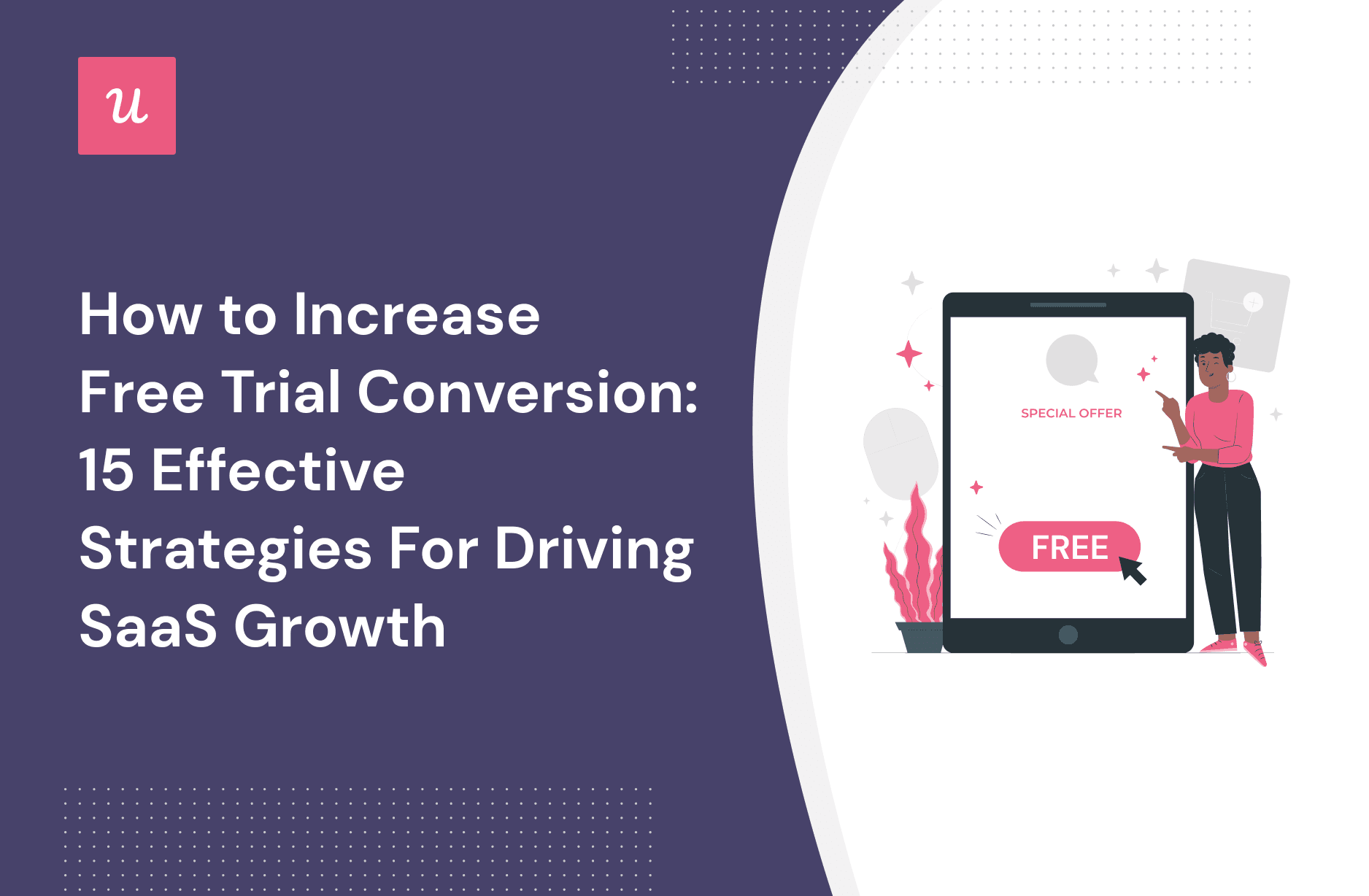
Wondering how to increase free trial conversion for your software product?
Trials can be tricky. You’ll face the challenge of getting qualified leads and ensuring users don’t abuse trials. There’s also the cost implication. Free trials can impact cash flow and revenue generation, especially if a significant portion of trial users don’t convert into paying customers.
But with the right conversion rate, you’ll unlock growth opportunities and become more competitive. This article explores 15 strategies to help you achieve that.
TL;DR
- A free trial is a sales strategy that allows prospective customers to use your product for a limited time.
- Types of free trial models in SaaS: opt-in and opt-out free trials, freemium, free trial after a demo, and free trial with gamified extensions.
- When choosing the right free trial model, there are three factors to consider: product complexity, the product metrics you’re interested in tracking, and the length of your free trial.
- Calculate your free trial conversion rate by dividing the number of free trial users converted in a given period by the number of all free trial users within that period. Multiply the result by 100 to get a percentage.
- There’s no universally defined “good” conversion rate for free trials. However, some studies show an average of 25-50%, depending on your free trial model.
15 strategies to boost SaaS free trial conversion rates:
- Implement a product-led approach rather than directly involving your sales team
- Find the right balance of features included in your free trial
- Personalize the onboarding process for free trial signups
- Guide new users towards activation with onboarding checklists
- Use interactive walkthroughs to shorten the learning curve and time to value
- Use gamification to get users hooked and build habits around your product
- Offer self-service support to free customers through a knowledge base
- Experiment with different lengths and optimize your free trial period
- Collect feedback and use the data to improve the free trial process
- Create various educational resources to cater to different learning styles
- A/B test user experiences to improve free trial conversions
- Invite high-value prospective customers to personalized demo calls
- Convert free trial users into paying customers with contextual upgrade prompts
- Use the reverse trial model to convert more free users to paid customers
- Remind users of trial expiration to reinforce FOMO
Userpilot offers a number of valuable features to help you execute the above strategies in your app. Book a demo to learn more.
What’s a free trial in SaaS?
A free trial is a sales strategy that allows prospective customers to use your product for a limited time. The idea is for trial users to engage and find the product valuable enough to start paying after the trial period.
Some SaaS companies also offer paid trials, asking users to pay a small fee to test the product. However, our focus today is on free trial users.
Types of free trial models in SaaS
For SaaS products, there are at least five free trial models:
- Opt-in free trial: Users gain access to the software without giving out their payment information.
- Opt-out free trial: Requires users to submit their payment details upfront before accessing the product.
- Freemium: Users get a free version of the software, often with limited features or functionality.
- Free trial after a demo: Users first experience a product demo or presentation given by the sales team to understand the product’s capabilities. After the demo, they’re offered a limited-time free trial to explore the software further and evaluate its suitability.
- Free trial with gamified extensions: This type of free trial incorporates gamification elements to enhance user engagement and provide an interactive experience. Active users will win points to extend their trial period.
How to choose the right free trial model for your SaaS?
With several options available, you can be confused trying to choose the model that’s right for you. We’ll go over that in a bit, but it’s worth noting that you don’t have to use just one model. You can very well combine 2-3 to give customers the right experience.
For instance, you could use the opt-in approach to get many prospects through the door without friction and implement a freemium trial model. Or, you could provide product demos and give gamified free trials to only users who submit their payment information.
That said, below are the key factors to consider when determining the right model to use:
- Product complexity: For complicated products, it’s better to teach users the basics with a product demo and then do a free trial.
- The product metrics you’re tracking: For example, asking for a credit card in your free trial flow could reduce leads but increase conversion rates, so it depends on what your current product metrics look like.
- The length of your product’s free trial: If your trial period is relatively lengthy, consider using the opt-out model to avoid prospects with low intent. In the same vein, a super short trial period might be ineffective for free trials with gamified extensions.
How do you calculate free trial conversion rates?
The free trial conversion rate is calculated by dividing the number of free users converted in a given period by the number of all free users within that period. Multiply the result by 100 to get it in a percentage.
Example: Imagine you had 700 free users between January and June 2023, but only 200 converted. Your conversion rate would be:
200/700 X 100 = 28.6%

Formula to calculate trial-to-paid conversion rate.
What is a good conversion rate for free trials?
The conversion rate for free trials in the SaaS industry can vary significantly based on factors such as the nature of the product, target market, trial duration, pricing structure, and overall value proposition.
While there is no universally defined “good” conversion rate for free trials, it’s helpful to understand the average range.
According to a study by Totango, free trials with credit card details have an average of 50% conversion. Similar research by Softletter found an average of 25% for free trials without credit cards.
How to increase free trial conversion rate: 15 effective strategies
Now that you’ve seen how to calculate your conversion rate and know the averages, it’s time to improve your rates. The 15 strategies below will help you convert free trial users into paid customers.
1. Implement a product-led sales strategy to identify product-qualified leads
In a product-led approach, the product is the primary acquisition driver. This is unlike the traditional method where leads are qualified in MQLs and SQLs.
Product-led sales start with a freemium or free trial, letting users explore the product through a mostly hands-off self-service experience. This alone makes it a more suitable strategy for free trials.
Product-qualified leads have a higher chance of converting, but a lot relies on your product team’s ability to create engaging experiences.

Product-led growth flywheel.
2. Find the right balance of features included in your free trial
The right balance is the key to conversions. If you don’t add enough features, users won’t experience the expected value and drop.
On the other hand, too many features will overwhelm users, complicate the product experience, and increase the time to value. You’ll experience high churn as a result.
A good way around this is to go back to your past onboarding data. See what core features your most active users engaged with (use feature heat maps to ascertain this), and add them to the free trials. Remove secondary features for now.

Feature heat map in Userpilot.
3. Personalize the onboarding process for free trial signups
Collect info on users’ jobs to be done with a welcome screen that looks something like this:

Welcome survey created in Userpilot.
Then use the data to segment users and trigger onboarding experiences tailored to their needs. This will help users experience value fast, prevent them from churning, and increase their chances of converting.

Customer segmentation in Userpilot.
4. Guide new users towards activation with onboarding checklists
A checklist helps users experience the benefits of your product quickly. It enables them to explore your key features and decide if the tool is what they need.
To be effective, create customized checklists for each user segment. Include just 3-4 actions that a specific user persona needs to take to experience value. Making the checklist longer can overwhelm users and have a counter effect.
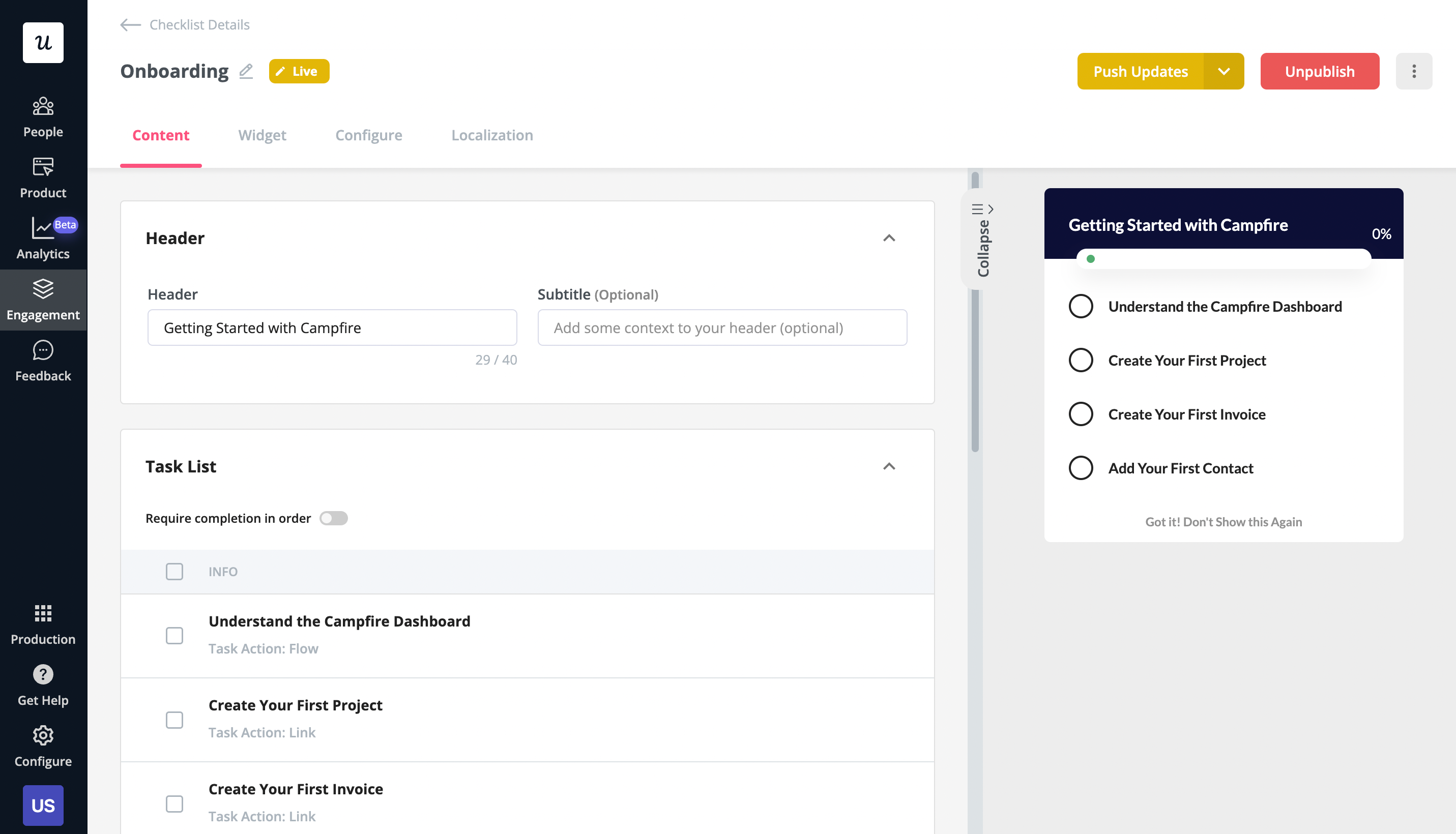
User onboarding checklist to boost free trial conversion. Create code-free with Userpilot.
5. Use interactive walkthroughs to shorten the learning curve and time to value
Instead of traditional product tours that walk users through all the features at once, employ bit-sized engaging feature walkthroughs.
This form of contextual user education eliminates confusion and reduces friction, helping users get immediate value from your tool.
Use a variety of UI patterns to create engaging interactive walkthroughs.

Tooltips for interactive walkthroughs.
6. Use gamification to get users hooked and build habits around your product
Celebrating small wins increases the chance of higher engagement. That’s because the user is motivated to repeat the actions that drove the initial success and got them the dopamine hit.
The repeated engagement will hook users to your tool. And that’s exactly what you want—integrating the product into your user’s day-to-day life during the trial means more users will upgrade to not lose the value they’ve been enjoying.
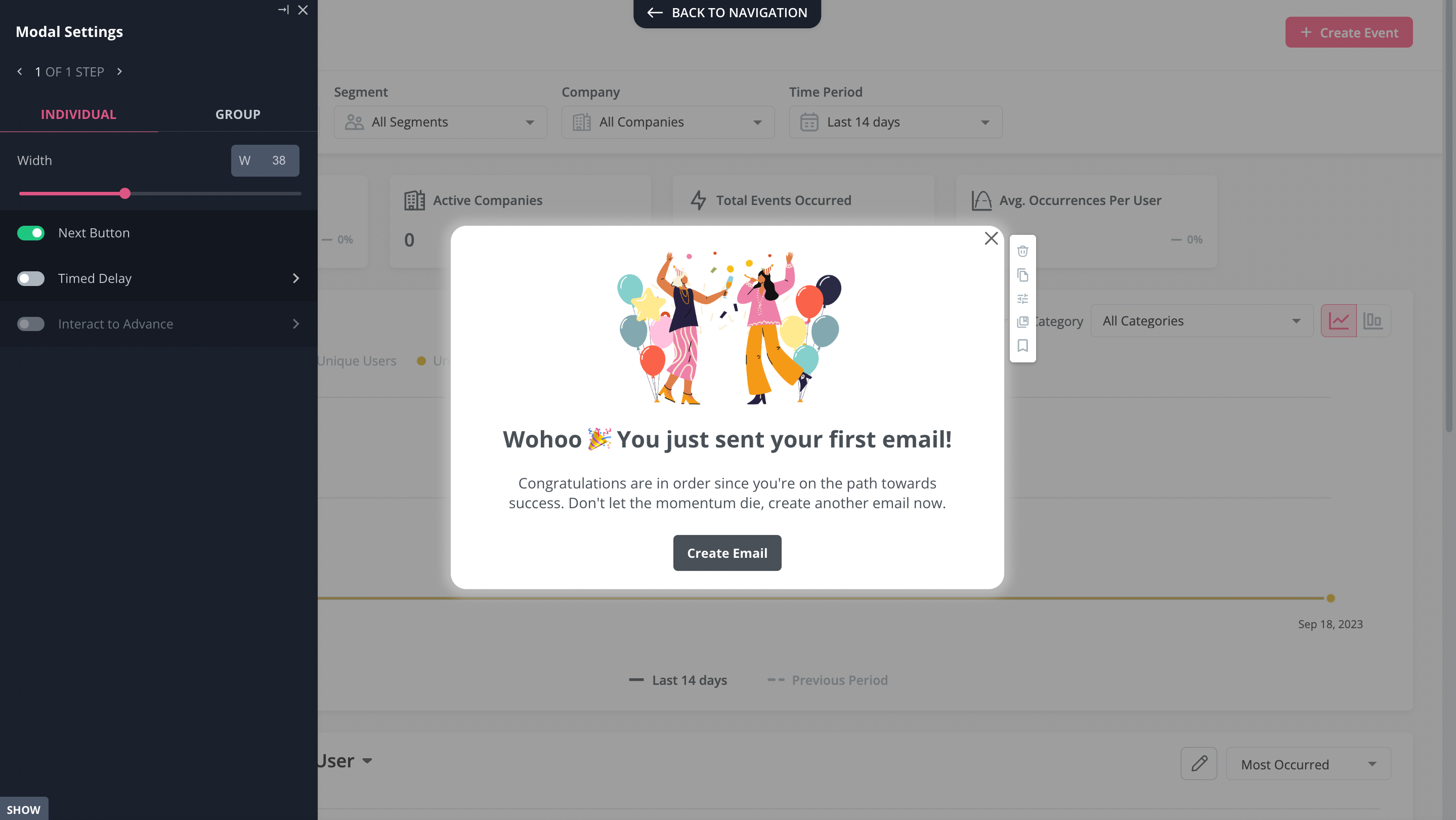
A celebratory modal created in Userpilot.x
7. Offer self-service support to free trial customers through a resource center
New to the product, your users will experience difficulty familiarizing themselves with every aspect of the tool.
Help them find answers quickly and effortlessly with a robust knowledge base and resource center. It will improve the user experience and make users more willing to pay for the product.
Ensure this self-serve portal is equipped with every important information about your product. Make the content searchable and categorize it properly for easy navigation.

Resource center built with Userpilot.
8. Experiment with different lengths and optimize your free trial period
Free trial lengths range from 7 to 60 days, but the most common among B2B SaaS companies is 14 or 30 days, depending on product complexity and the company’s financial situation.
How to smartly experiment with different trial lengths?
Identify the activation points in your product and the actions needed to reach them, then assess how long it will take for users to complete those key steps.
You can use Userpilot’s funnel analysis feature to ascertain the ideal trial period. Create the funnel chart for your activation events and then view on which days free trial users convert the most.
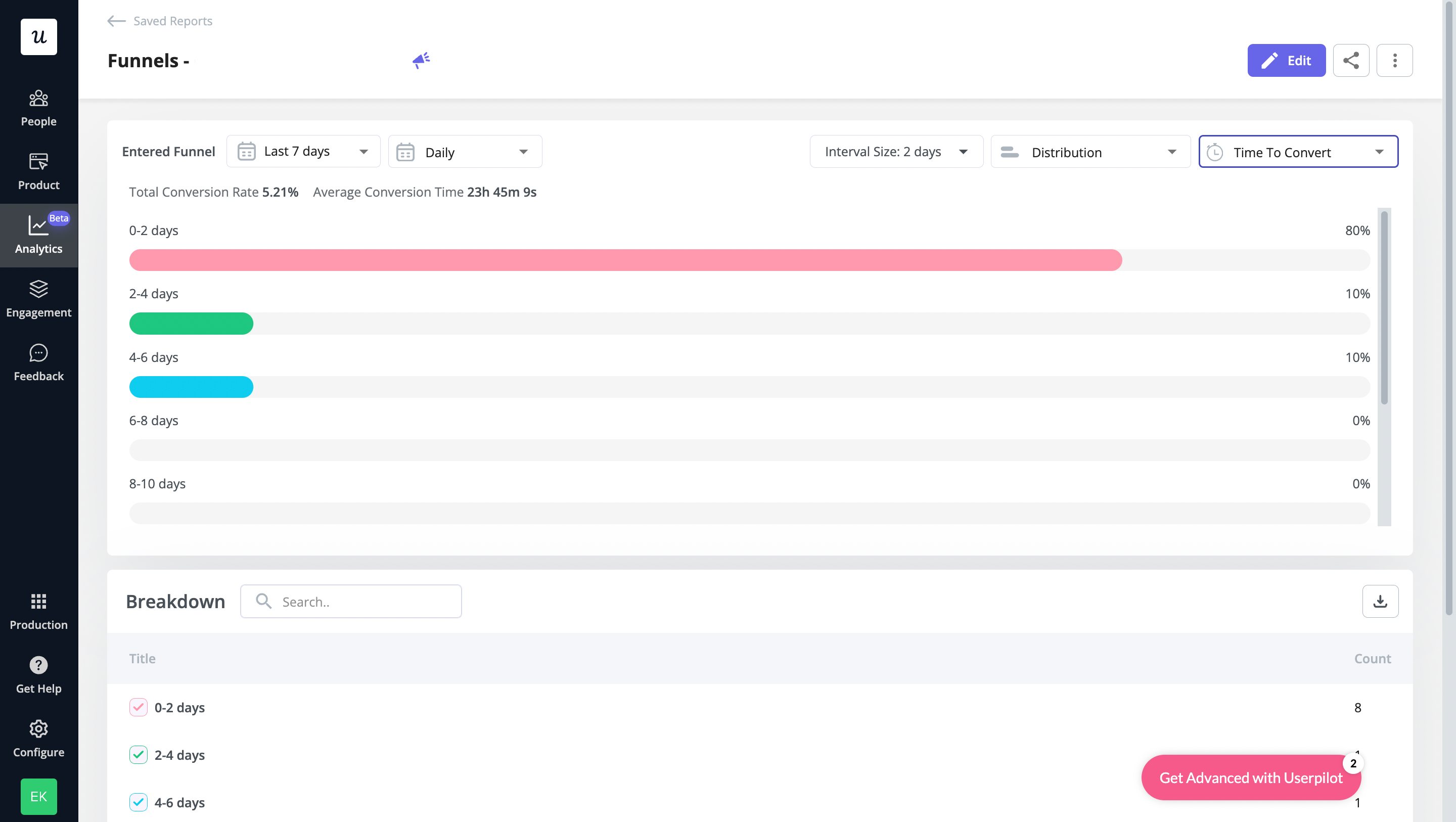
Funnel analysis in Userpilot.
9. Collect feedback and use the data to improve the free trial process
Feedback from free users can help you understand customer needs and expectations. You can then analyze this data to identify loopholes in your trial experiences.
Ensure to act on the feedback to create better experiences for future trialists. For example, if the survey shows users struggle to understand features, you could remedy it by creating better in-app guidance and actively pointing users to your knowledge base.
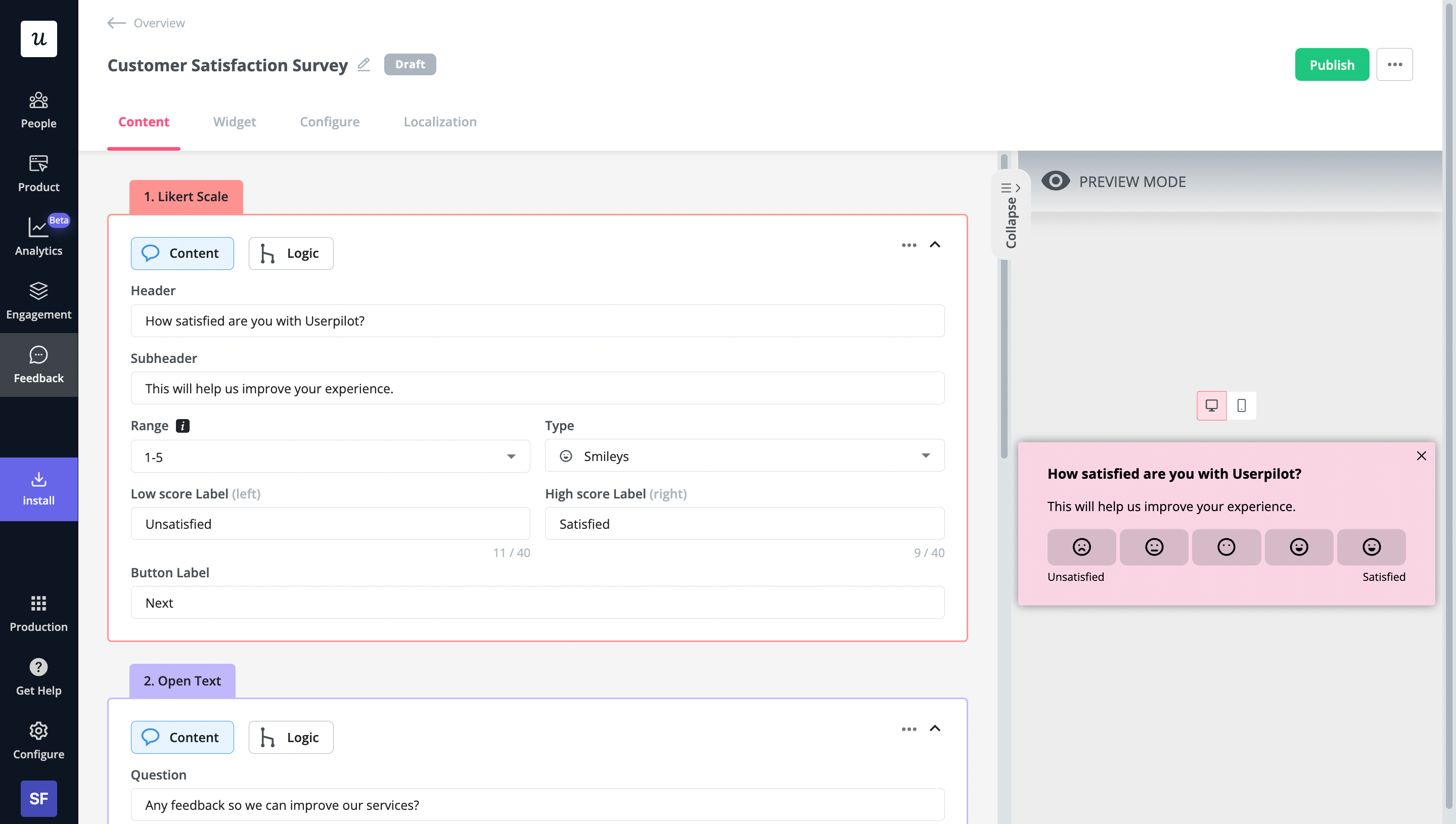
User feedback survey example in Userpilot.
10. Create various educational resources to cater to different learning styles
Customer education enables users to uncover the full potential of your product and use it effectively. However, different people prefer different learning styles, so sticking to one format might make your education efforts less effective.
So create a variety of learning resources so everyone can find what works for them. For example, you could host webinars, have documentation and blog posts users can read on your website, make micro videos, have product tours, etc.
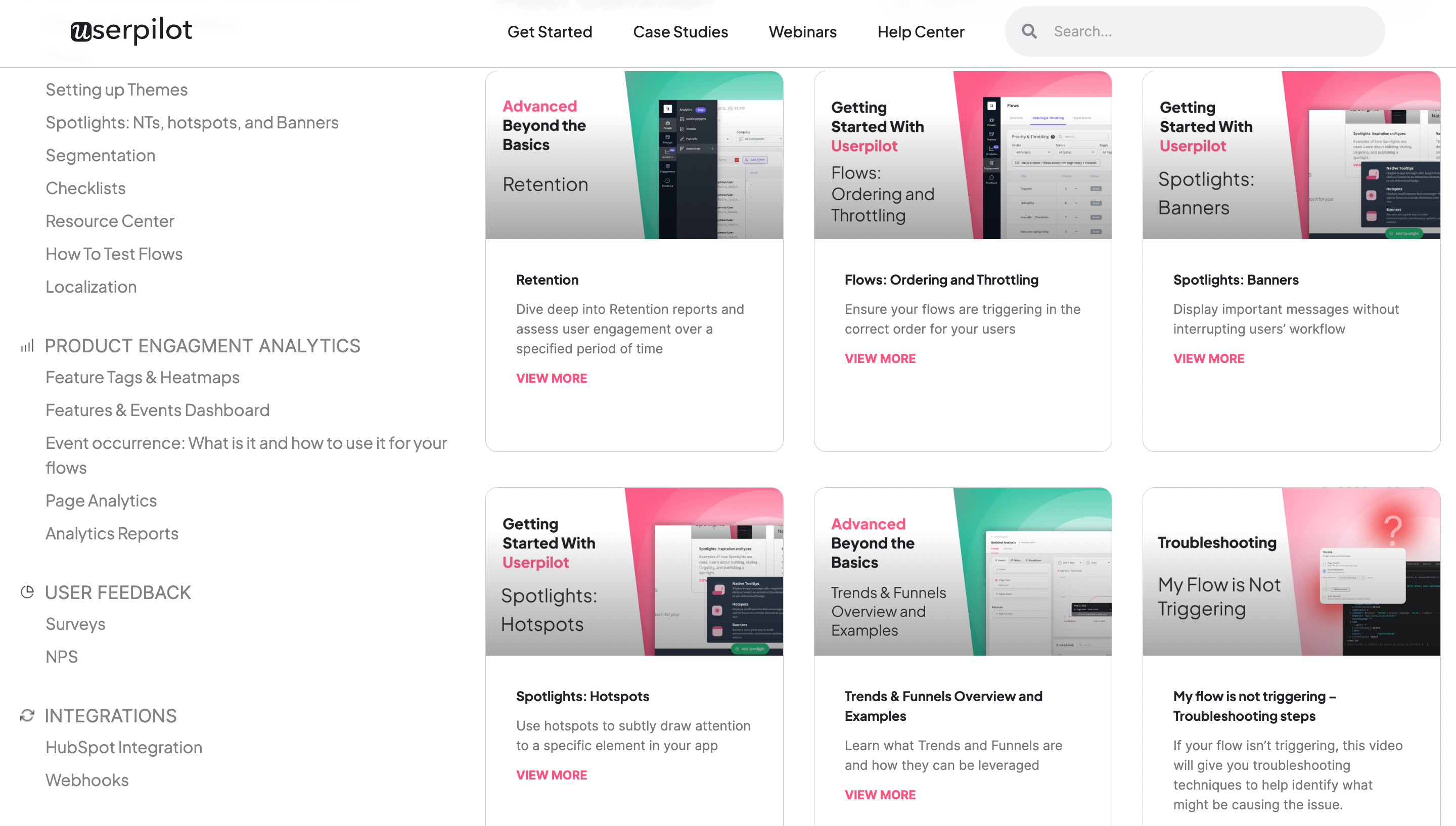
Userpilot video library.
11. A/B test user experiences to improve free trial conversions
Run experiments on small user groups to understand which flow results in more conversions. Then implement a more successful flow for the rest of the free users.
For instance, you can A/B test if a specific flow—e.g., a welcome screen with a prompt—will improve your user activation goal.
Userpilot helps you do this easily. Our platform automatically shows your A/B testing flows to only 50% of the qualified users, keeping the rest as the control group.
From the results, you can see your flow’s impact on the specific goal you set and use that data to make decisions.
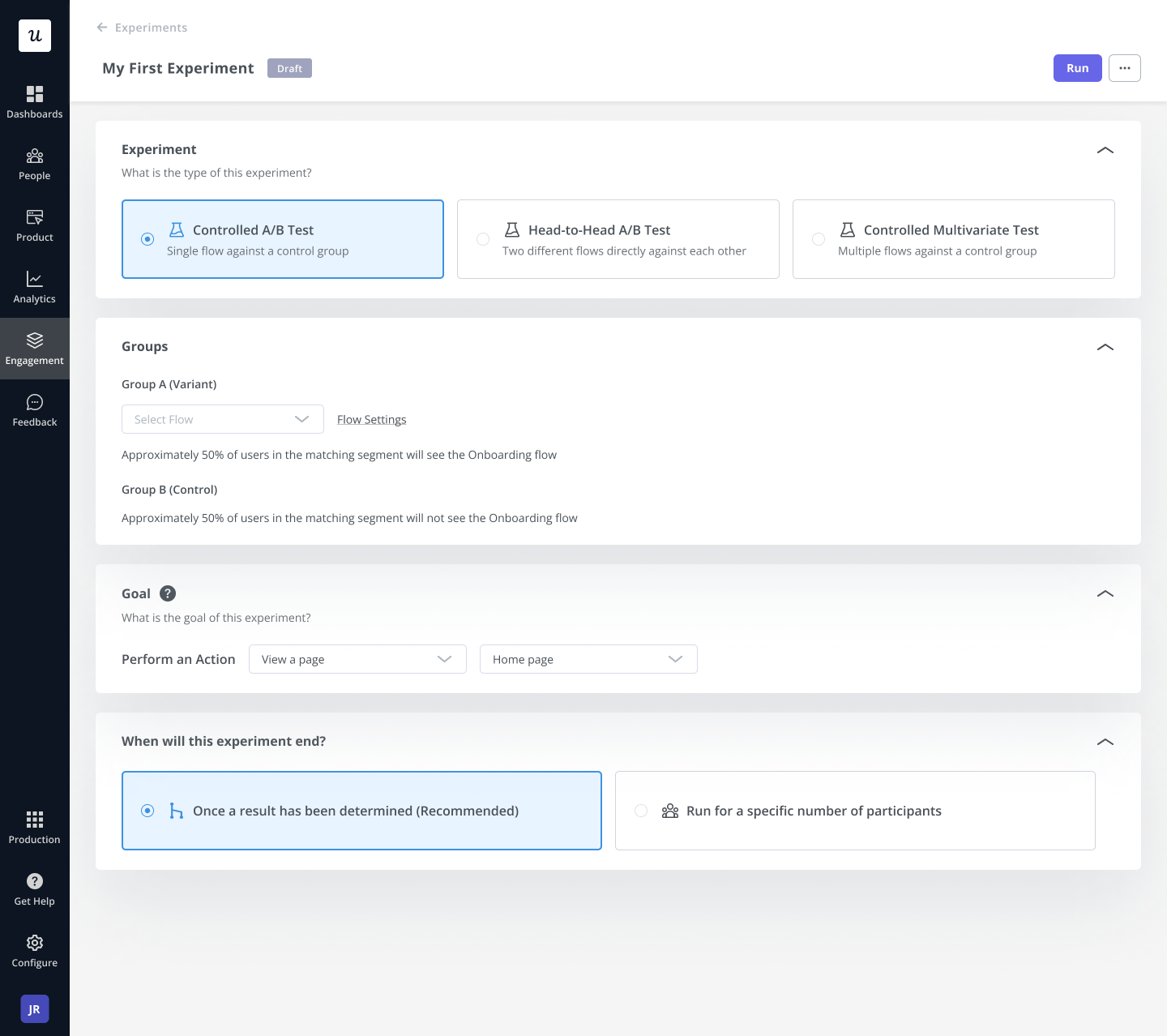
A/B testing in Userpilot.
12. Invite high-value prospective customers to personalized demo calls
Don’t leave your high-value prospects to chance. Invite them to personalized strategy calls with the customer success team.
This kind of white-glove onboarding does two things:
- Make prospects feel valued.
- Jumpstart the onboarding, reduce friction, flatten the learning curve, and reduce the chances of trial users becoming inactive.

Modal inviting users to hyper-personalized onboarding. Create modals code-free with Userpilot.
13. Convert free users into paying customers with contextual upgrade prompts
Just don’t be too salesy or you might turn customers off. The best way to prompt upgrades and have high conversions is to contextualize your messages.
For instance, don’t ask a user to upgrade their accounts immediately after contacting support. There’s no connection.
Instead, trigger a tooltip showcasing a paid feature right when the user might need it.
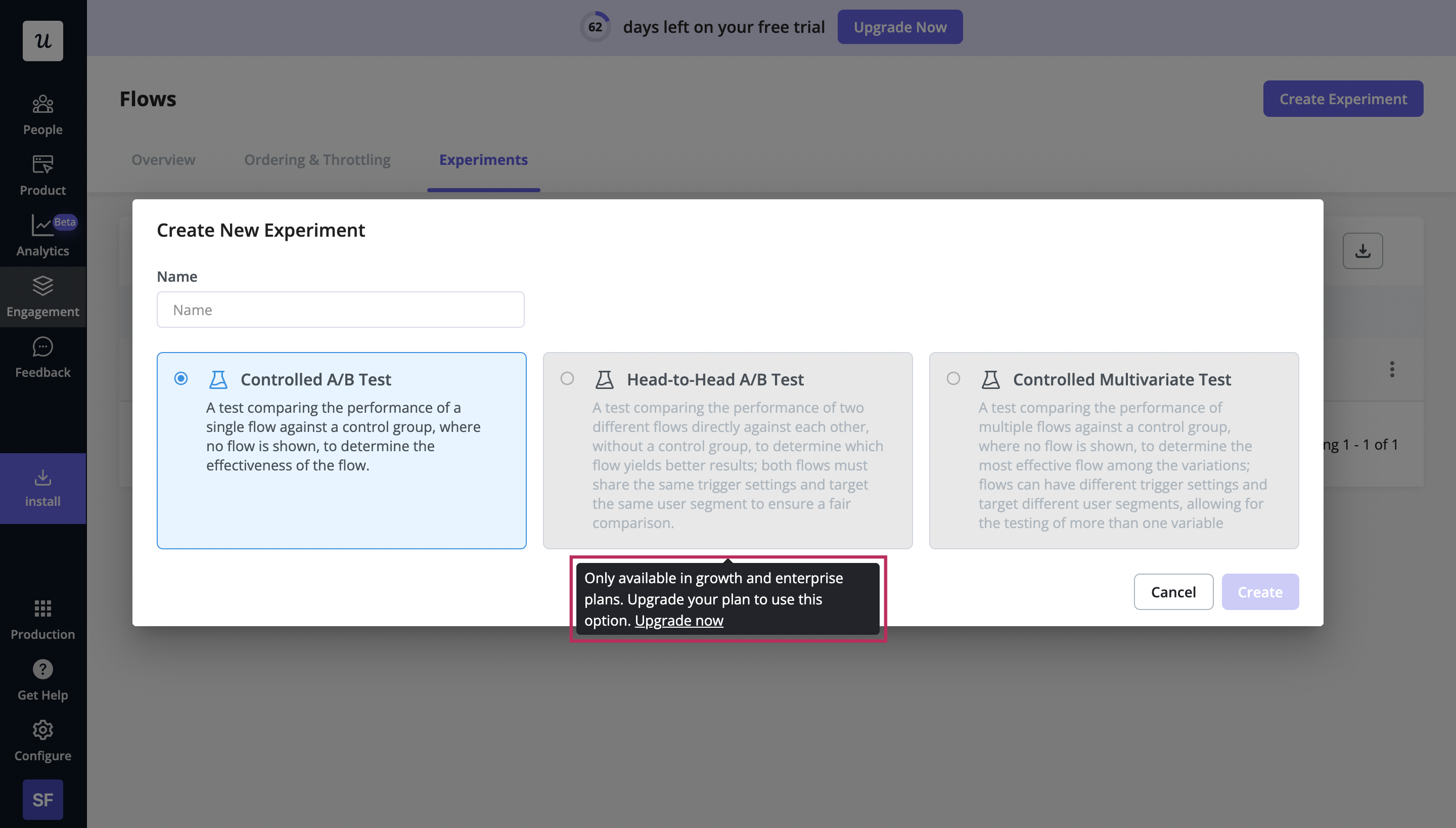
Contextual upgrade prompt from Userpilot.
14. Increase free to paid conversion rate with reverse trial model
A reverse trial combines free trial and freemium to win more users over. First, users receive full access to all paid features of the tool for a limited time—say 14 or 30 days.
After that, users who don’t upgrade won’t lose their accounts. They just get downgraded to the freemium plan with limited features.
Having tasted the paid version, many will prefer to become paying customers than lose access to features they’ve already built a habit around.

Toggl’s reverse trial signup page.
15. Remind users of trial expiration to reinforce FOMO
As the trial period draws to a close, trigger FOMO by reminding users what they’ll lose if they don’t upgrade.
People don’t like losing what they already have, so reminding them of the value they’ll miss makes them more likely to start paying.
You can trigger your trial expiration messages in-app, via email, or both.
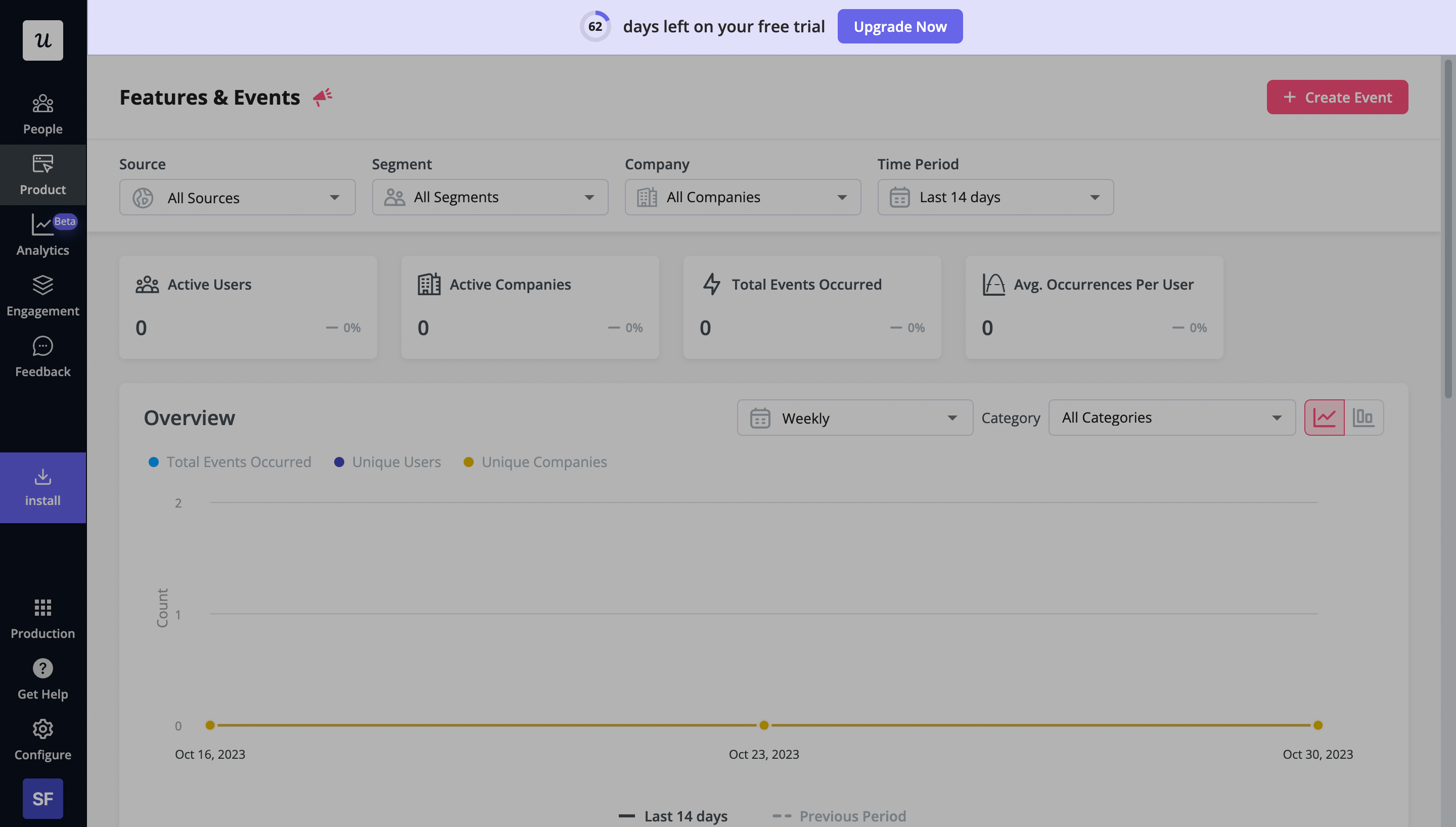
Upgrade reminder in Userpilot.
Conclusion
When it comes to increasing SaaS free trial conversion rates, it’s challenging to pinpoint the most critical thing, as multiple factors contribute to the overall success.
However, one key aspect that significantly impacts conversion is delivering a seamless and valuable user experience throughout the trial period.
Our platform lets you do these with ease. Book a demo now to see how to increase free trial conversion with Userpilot.

